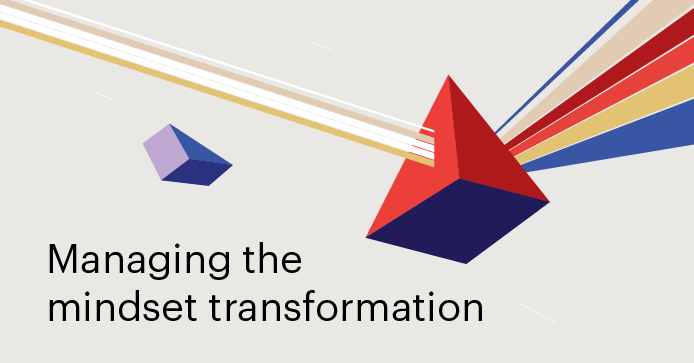That mindset transformation trumps technological transformation is neither new nor novel. Yet, companies continue to overlay sophisticated technologies on rigid, outdated, and sometimes completely broken systems and pay the price for it. The question is, can organizations still afford to bury their head in the sand (or in the overhang of a traditional psyche), especially in an ever-evolving pandemic world? Successful transformation requires successful adoption of technology. Yet, the key to successful adoption isn't about technology, it is about people and user experience.
People tend to think that technology is the key driver for velocity, and this could be true in certain cases, but overall, technology delivers insight that makes people more responsive and intelligent. On its own, however, technology cannot deliver results without a high-caliber team.
Velocity requires businesses to build a modern digital foundation, invest in deep transformations, and embrace the power of engineering – contained within a people-oriented, automation-first, and agile-at-scale approach. The foundation provides stability and resilience to navigate market shifts and acts as a backdrop for a culture that promotes collaboration and employee well-being. This is what drives enterprise velocity in the long run.

1
Challenge core impulses
The idea of velocity, structured around a definite sense of directionality, is catching on because people understand that speed for speed’s sake is unsustainable. But without concrete action, conceptual thinking won’t deliver results. Nurturing a legacy view of data, decision making, or digital adoption is a death knell in today’s business environment, so make it a mission to realign with change management. The urgency to shed old skin, hardwired prejudices, and finetune focus is more pronounced now than ever before because we have digitally leapt forward in 2020-2021 by a decade, and our behavior must catch up.
2
Incentivize outcomes and allow appropriate failure
Human beings respond to stimuli, and most large companies reward only success. A fail-fast environment leads to rapid learning. In our survey, while people most strongly associated getting tasks done with velocity, they least connected it to a fail-fast culture. In the enterprise velocity survey while people most strongly associated getting tasks done with velocity, they least connected it to a fail-fast culture. The approach to risk and failure needs to change fast and change dramatically. The key is to institute activities that take the taboo and the stigma out of failure and risk-taking. Tweak daily productivity goals and free people from prevalent ways of measuring success. Plan hackathons and encourage creative brainstorming regularly so that the spotlight is more on the process than the product.
3
Reinforce agility
If companies think they are already doing it, we’d say - do it better. In our survey, we asked respondents to rank traits most necessary for agility. They ranked building trust higher than modernizing technology architectures, reconfirming that people-oriented skills must coalesce with digital capabilities for velocity to become more functional. However, business leaders said they were more focused on implementing innovation processes instead of communicating long-term strategic vision and identifying areas of innovation. In an agile environment, leaders set a sequence to priorities and outline the what and the why, and leave the how for the team to figure out. Agile teams are self-motivated, self-governed, and self-regulated. They focus on the right goals and feel trusted, empowered, and responsible for outcomes. Sometimes companies contextualize long-term goals but still try to micro-manage short-term ones, leading to high alignment with vision but low autonomy overall. Over time, this leads to fragmented results.














